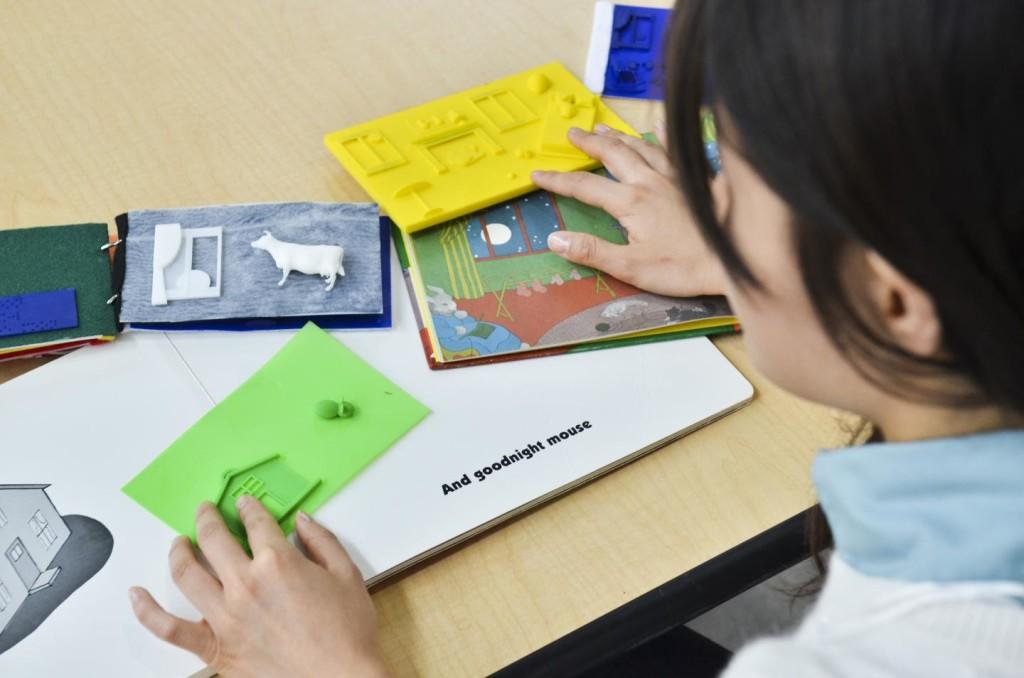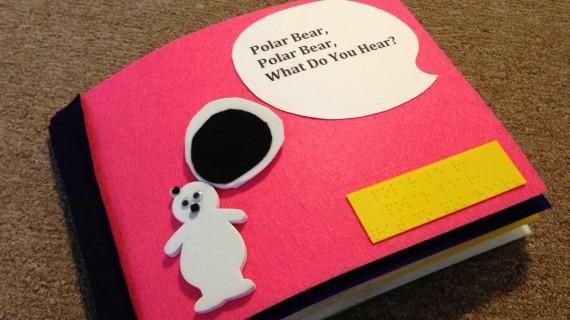 Braille has been around since 1824, when blind Frenchman Louis Braille invented the system of raised dots that would allow blind people to read with their fingertips. In the beginning, writing Braille was a labor-intensive process that involved using a stylus to punch each individual dot into the page of text. Of course, like all things, Braille has been made much easier by modern technology. Writing Braille is pretty much all computerized now, and 3D printing has made it possible to easily add it to any kind of surface. A 3D printer developed by Texas A&M University last year is capable of printing Braille onto any plastic surface, regardless of shape or size, making it easy to add onto any type of plastic consumer packaging, and a collaboration between two companies has resulted in a Braille converter for 3D models.
Braille has been around since 1824, when blind Frenchman Louis Braille invented the system of raised dots that would allow blind people to read with their fingertips. In the beginning, writing Braille was a labor-intensive process that involved using a stylus to punch each individual dot into the page of text. Of course, like all things, Braille has been made much easier by modern technology. Writing Braille is pretty much all computerized now, and 3D printing has made it possible to easily add it to any kind of surface. A 3D printer developed by Texas A&M University last year is capable of printing Braille onto any plastic surface, regardless of shape or size, making it easy to add onto any type of plastic consumer packaging, and a collaboration between two companies has resulted in a Braille converter for 3D models.
While it’s heartbreaking to think about children born without eyesight, I imagine that it’s easier for them to learn to read Braille than it is for adults who have lost their sight later in life. Learning the code of dots that make up the Braille system is essentially like learning a new language, which is much harder to do when you’ve been using one language for your entire life. For visually impaired children, learning Braille is just learning to read. What those children don’t generally get to experience, though, are pictures. Picture books are standard for young children, not only helping them learn to read but also visually teaching them about the world around them.
A computer science professor at the University of Colorado Boulder has come up with a way for blind children to experience pictures as well as words while reading. Tom Yeh is the creator of the Tactile Picture Books Project, which we first encountered in 2014. Yeh has been working on 3D printing popular children’s books, complete with raised pictures that kids can feel with their hands – as well as Braille text. Since we first wrote about him, Yeh and his team have been working steadily on the software that will allow parents and teachers to easily 3D print any book they wish.
“The main idea is to represent 2D graphics in a 3D, tactile way on a scale appropriate for young children,” said Yeh. “The team combines this information with computational algorithms – essentially step-by-step instructions for mathematical calculations – to provide a way for parents, teachers and supporters to 3D-print their own picture books.”
Yeh’s initiative has expanded into a large open-source project that has generated some incredible ideas. The books printed by his team range from books on basic shapes to illustrated classics like The Very Hungry Caterpillar (one of my absolute favorites as a child). A 3D printed version of the Noah’s Ark story allows children to feel the raindrops, the texture of the boat, the waves. Yeh has even developed a form of pop-up book consisting of pictures that can be moved, flipped and spun by children. Other ideas being worked on include tactile comic books and textbooks.
The Tactile Picture Book project also offers workshops for interested participants in the area, and the team invites anyone to subscribe to their newsletter to learn more about designing 3D printed tactile books and how you can help contribute. If the project continues to develop the way it has been, there may soon come a time when the visually impaired can experience all books in the same way that people with full eyesight can. Do you know a child who would enjoy one of these books? Discuss in the 3D Printed Books for Blind Children forum over at 3DPB.com.
Subscribe to Our Email Newsletter
Stay up-to-date on all the latest news from the 3D printing industry and receive information and offers from third party vendors.
You May Also Like
Have You Met SAM: Steel Additive Manufacturing
“Have you met SAM?” This question was on a banner above our stand at Formnext last November. We believe the usage rate of additively manufactured steel parts is far too...
3DPOD 237: 3D Printing in Golf with Ryan Roach, Director of Innovation at Cobra PUMA Golf
In this episode of the 3DPOD, we take a deep dive into 3D printing for golf. Cobra PUMA Golf has gone further than other firms, employing Multi Jet Fusion, binder...
Europe at a Crossroads: Transforming Challenges into Industrial Opportunities
Europe is awakening to its challenges, and with adversity comes opportunity. Our industries stand at a crossroads, ready to make transformative choices that will shape their future. While Europe faces...
The Importance of Services in 3D Printing: Steady Growth and Promising Potential
Additive manufacturing services are often underestimated in our industry, with the spotlight focusing on hardware, software, and the products they enable. Industry coverage and public perception frequently center on major...





























